Improved strawberry shrub is a seasonal twist on Jerry Thomas’ 1862 recipe for ‘222. Lemonade.’ which is made by the glass calling for lemon juice, sugar, strawberry or raspberry syrup, orange slices, water in a large bar glass of crushed ice dashed with port, using a strawberry blood orange and cinnamon shrub syrup. Improved strawberry shrub is a very flavoursome low alcohol cocktail or party drink that recreates Jerry Thomas’ 1862 lemonade recipe with a pickle twist – the strawberry shrub syrup is flavoured with fresh in season strawberries, paired with blood oranges and cinnamon, sweetened with low GI cane sugar preserved in light coconut vinegar. The strawberry shrub syrup offers a very refreshing lemonade or orangeade like drink that is then improved by dashing the top of the glass with port before serving – creating a gorgeous ruby red float on top of the drink which is served over a mountain of crushed ice and garnished with a fresh strawberry and blood orange slices. The port adds a delicious rich cherry and spice flavour that beautifully complements the strawberries, blood oranges and cinnamon of the shrub syrup.
Jerry Thomas’ by the glass lemonade recipe 1862 ‘222. Lemonade.’
The recipe for lemonade by the glass is the first recipe in the temperance drinks section of Thomas’ 1862 Bar-tender’s Guide it is simply called ‘222. Lemonade.’ (Thomas 1862: 239). The recipe calls for ‘juice of half a lemon’, ‘1 ½ tablespoonful sugar’, ‘2 or 3 pieces of orange’, ‘1 tablespoonful of raspberry or strawberry syrup’, Thomas (1862: 239) writes of the method:
“Fill the tumbler [large bar glass] one-half full with shaved ice, the balance with water; dash with port wine, and ornament with fruits in season.”
The by the glass lemonade recipe is a longer style drink built and served in a large bar glass. I stumbled onto Jerry Thomas’ (1862: 239) by the glass lemonade recipe when I was making blood orangeade a couple of weeks ago, improved with egg white and sherry. This by the glass lemonade recipe sounded equally intriguing – being in the temperance drinks section and called a lemonade but then dashed with port before serving. I decided to give it a try but looking at the ingredients realised it would easily be possible to do a pickle twist on this recipe as it was basically a low alcohol sour recipe using lemon, sugar, raspberry or strawberry syrup, water and a port float – an improved strawberry shrub.
Related drinks: Gin & Brandy Sangaree
Jerry Thomas’ Lemonade by the glass recipe ‘222. Lemonade.’ is a little like a Brandy or Gin Sangaree in presentation, with use of a port wine float and crushed ice (see Wondrich 2015: 202-203; Thomas 1862: 169-170). There were Port, Sherry and Ale variations of the Sangaree, the Port Wine Sangaree or Porteree features a garnish of nutmeg, absent in the lemonade and Gin Sangaree recipes (see Wondrich 2015: 202-3; see Thomas 1862: 171 for the Port Sangaree). Jerry Thomas’ (1862: 171, 175) recipe for a Gin Sangaree calls for the same ingredients as a Gin Toddy or Sling (the sling has a nutmeg garnish) 1 teaspoonful sugar, ½ wineglass water, 1 wineglass or 2 shots gin, without the nutmeg, he writes of the method for making the Gin Sangaree:
“Fill two-thirds full of ice [a small bar glass], and dash about a teaspoonful of port wine, so that it will float on the top.”
The Gin version of the Sangaree while using crushed ice and a port float is a shorter style drink served in a small bar glass. Interestingly, David Wondrich (2015: 203) advises that the Brandy Sangaree can be much improved by the addition of orange juice and more than a teaspoonful of port.
Flavour pairing: sherry and port as flavour enhancers for temperance drinks
All this said about related cocktails I have become especially interested in creating drinks that are all about flavours and how flavour pairing ingredients can enhance one another – these improved temperance drinks using small amounts of sherry and port to flavour refreshing drinks is to me a great idea offering maximum flavour without necessarily having a strong drink. They bring to my mind lemon lime and bitters which makes use of alcoholic bitters as a key flavour but is classified as a non-alcoholic drink – see my previous post on using rhubarb bitters in a rhubarb twist on the classic Australian lemon lime and bitters. It is interesting that the alcohol appears in this section on temperance drinks but being before prohibition perhaps this use of small amounts of alcohol even in non-alcoholic drinks was acceptable. In any case it seems that Jerry Thomas was as usual most concerned with creating drinks that tasted amazing due to the combination of their fine ingredients.
What is a shrub syrup drinking vinegar?
Shrub syrup drinking vinegars are a means of preserving in season fruits and vegetables using vinegar flavoured with sugar or other sweeteners such as honey and herbs and spices. The ratio for preparing a shrub syrup is traditionally 1:1:1 fruit or vegetable, vinegar, sugar. However, it is the vinegar which is preserving the fruit or vegetables so you can reduce the amount of sugar to your taste or use alternative sweeteners such as honey along with sweet spices to create sweetness or other flavour combinations.
Shrubs are a fantastic way to add a souring agent and flavouring to cocktails and mocktails that while requiring a little advance preparation then simplifies mixing drinks as the syrup is already prepared in advance and can contain a complexity and depth of flavour not possible with straight fruit juices or other mixers. I have made carrot, pineapple and fennel, raspberry and lime shrubs before for use as in refreshing non-alcoholic drinks, cocktails and desserts.
Shrub syrups are great is all kinds of cocktails but especially in sours as they have vinegar as a key ingredient – the acidity in the vinegar also means they are very refreshing to drink, especially with lots of crushed ice, which for me recalls their origins and association with sherbet.
How to make a strawberry shrub syrup
The strawberry shrub syrup is made by a process of cold infusion of strawberries and blood orange juice, cinnamon and low GI cane sugar rubbed with the blood orange zest to release the blood orange oils which produces a syrup. The syrup is then strained, and coconut vinegar is added by straining through the leftover strawberries to wash off the remaining sugar. The resulting shrub syrup is then decanted into a sterilised jar and stored in the fridge for use in refreshing drinks, cocktails and desserts. The flavours of this shrub continue developing as it matures but it is delicious straight after it is made and can be used at once if desired. The method of cold process infusion is informed by Michael Dietsch’s (2016) amazing book Shrubs while the flavour pairing of strawberry with blood orange and cinnamon and coconut vinegar and use of the blood orange zest to make an oleo saccharum with the low GI cane sugar is my own contribution.
The leftover strawberries are delicious – reserve these for use as a dessert on their own or with a coconut yoghurt or make them into an ice cream using coconut cream and a little maple syrup – in a previous post when I made a raspberry and lime shrub I used the leftover raspberries from making the shrub to make this style of dairy free ice cream or ‘nice cream’. Do not throw the leftover strawberries away – they are too good to miss out on! You can also use them to garnish desserts, drinks or cocktails.
How is the improved strawberry shrub different to a lemonade?
The lemonade recipe which inspired the improved strawberry shrub uses the same basic components but as individual elements which are then built in a large bar glass by the glass as required. The use of a shrub syrup has advantages over the by the glass method: preserving fresh in season fruit for longer use, allowing ease of mixing and batch preparation for parties and addition of complex flavours using flavour pairing such as the combination of strawberry, blood orange and cinnamon. Following Jerry Thomas’ original lemonade recipe this improved strawberry shrub is enhanced in flavour by dashing with port – for a delicious but low alcohol fancy party drink.
Preserving – Improved strawberry shrub offers a way of preserving in season strawberries and blood oranges for longer use. The use of a coconut vinegar with the ‘mother’ as the means of preserving along with a low GI cane sugar combined with cinnamon for sweetness offers a healthy and lower sugar refreshing drink.
Ease of mixing using a versatile pre-prepared shrub syrup – Batch making the improved strawberry shrub syrup in advance allows for ease of mixing drinks for parties or gatherings. Rather than creating the drink by the glass with individual components of fresh lemon juice, sugar and raspberry or strawberry syrup the shrub syrup can be made ahead of time combining the citrus, sugar and berries and preserving these in vinegar. The mixing process for making drinks is simplified by using a shrub syrup although there is some advance preparation required. The non-alcoholic shrub syrup can form a base flavour for mocktails or refreshing drinks as well as cocktails and can also be used in desserts over fresh fruit or ice cream. The recipe included here is enough for several drinks being only a small batch recipe – if you wish to make this drink for more people simply increase the quantities.
Complex flavours – Shrubs offer versality in creating new and complex flavour pairings that would not be practical with fresh juices alone – the choice of vinegar, sweetening, fruits, vegetables, herbs and spices allows for amazing depth of flavour and a souring component to be added at the same time. I chose in this instance of making an improved strawberry shrub to pair fresh in season strawberries with blood oranges which are at their peak right now, along with sweet cinnamon, low GI cane sugar and a light sweet coconut vinegar.
Improving with port as a flavour enhancer – This is a very refreshing strawberry shrub syrup that pairs wonderfully with crushed ice and port. I used a Cockburn’s port which has cherry and spice notes. Only a small amount of port – about a tablespoon – is needed to add an amazing flavour boost to this already delicious drink.
Fancy styling – The improved strawberry shrub offers a low alcohol port cocktail served over crushed ice in a fancy wine glass with a fresh strawberry and blood orange slice garnish. It’s best served with a reusable straw because of the crushed ice. I’ve made this a fancier style drink in presentation as it’s perfect for parties.
Improved strawberry shrub: port cocktail
Print RecipeIngredients
- Strawberry shrub syrup: 1/2 cup strawberries, washed, hulled and sliced
- ¼ cup blood orange juice, reserve the zest
- ¼ cup low GI cane sugar
- Zest from 1 blood orange
- 1 cinnamon stick
- ½ cup coconut vinegar
- Improved strawberry shrub: 1 shot strawberry shrub
- Crushed ice
- Port to dash the top of the drink, Cockburn’s used here, about 1 tablespoon
- Glassware: fancy wine glass
- Garnish: single fresh strawberry, blood orange fans made from sliced rounds of blood orange, reusable metal straw
Instructions
Zest the blood orange
Rub the blood orange zest with the sugar to release the blood orange oils into the sugar, set aside
Juice the blood orange, set aside
Wash and hull the strawberries and cut into thin slices
Add the strawberries, blood orange juice, sugar and blood orange zest and cinnamon to a non-reactive clean container and place in the fridge to macerate and infuse for 2 hours or overnight
Meanwhile sterilise your jar by washing in hot soapy water and rinsing well, place jar on a cookie sheet in a 110 C oven for 15 minutes or until completely dry, boil lid in boiling water on stove top for 5 minutes and then allow to air dry – for more information see Resources
Strain the strawberries and cinnamon and zest out of the resulting syrup and capture the syrup in a clean container
Retain the strawberries, cinnamon and zest in the strainer and pour the coconut vinegar over to rinse off any remaining sugar – if it is stubbornly stuck repeat this process until it is removed
Reserve the strawberries for another use – they are amazingly delicious on their own or used in desserts or as garnishes
Improved strawberry shrub: Fill a fancy wine glass with crushed ice
To crush ice add it to a clean tea towel and bang with a rolling pin until well crushed, use an ice or julep spoon to add it to your glass
When the glass is full of ice add 1 shot of strawberry shrub
Top with soda water
Add a cap of ice if the ice has subsided once you added the liquid, this cap is also a lovely bed on which your garnish can rest
Garnish with a whole fresh strawberry, blood orange fans made from sliced blood oranges, simply slice the orange and then cut into halves and quarters and layer these over each other securing the ends in the crushed ice
Add a reusable straw
Dash the top of the drink with port by pouring this over the back of a long handled bar spoon so that it floats on the top of the drink
Enjoy
Notes
Shrub recipes
Michael Dietsch (2016). Shrubs: An Old Fashioned Drink for Modern Times, Second Edition. Countryman Press: New York.
Lemonade, orangeade, Sangaree and other cocktail recipes
Jerry Thomas (1862, 2018 reprint). The Bar-tender’s Guide: Bon-vivant’s companion. Dick & Fitzgerald: New York, reprint by Thomas Majhen.
David Wondrich (2015). Imbibe. Perigree: New York.
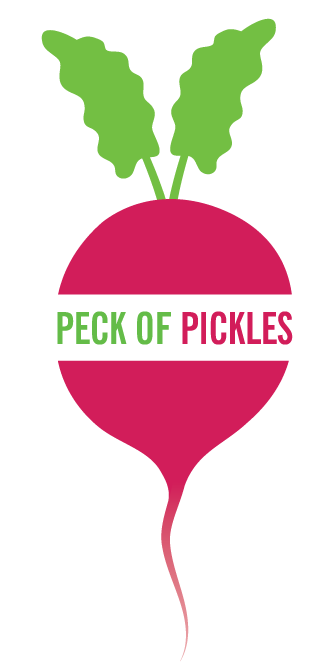
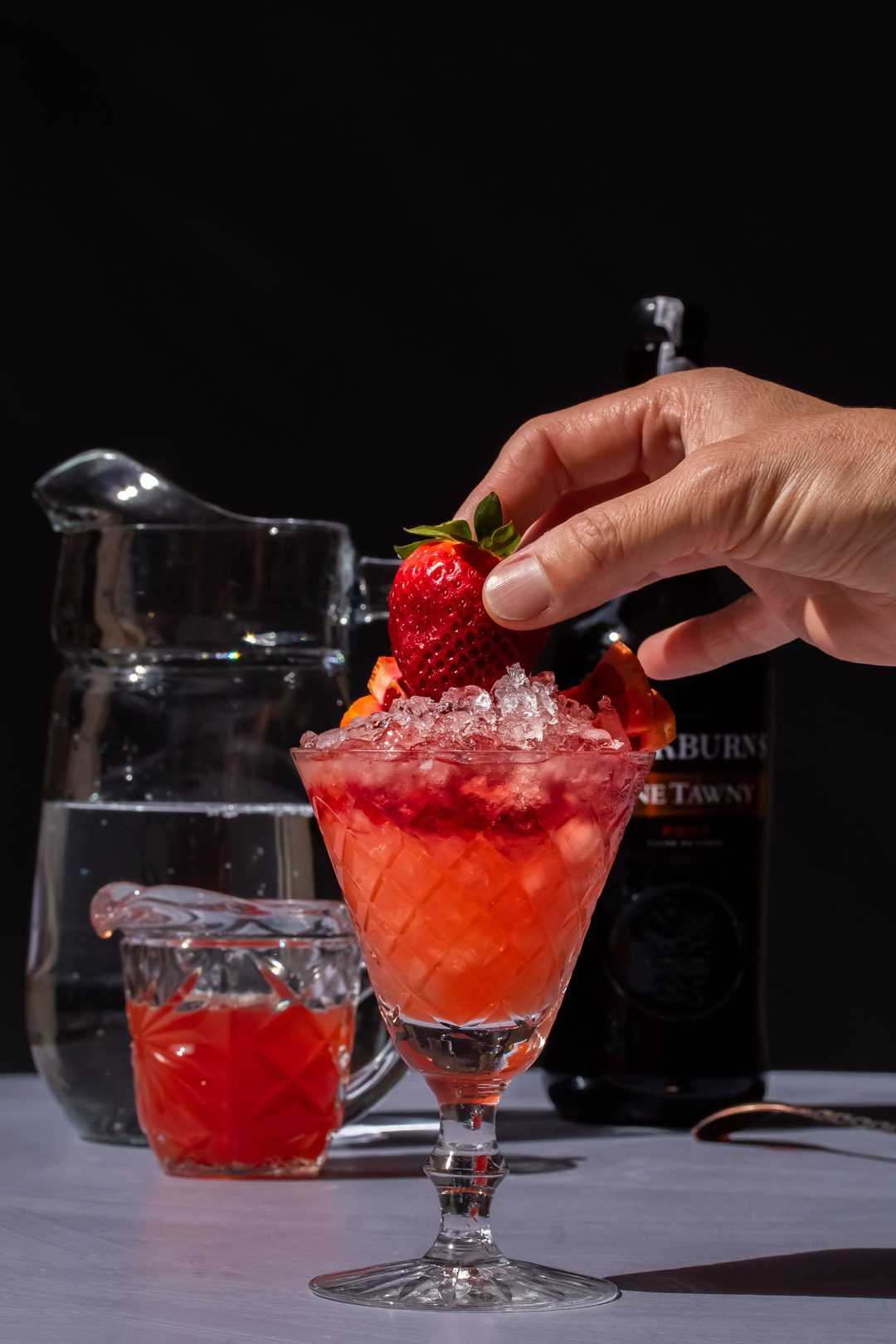
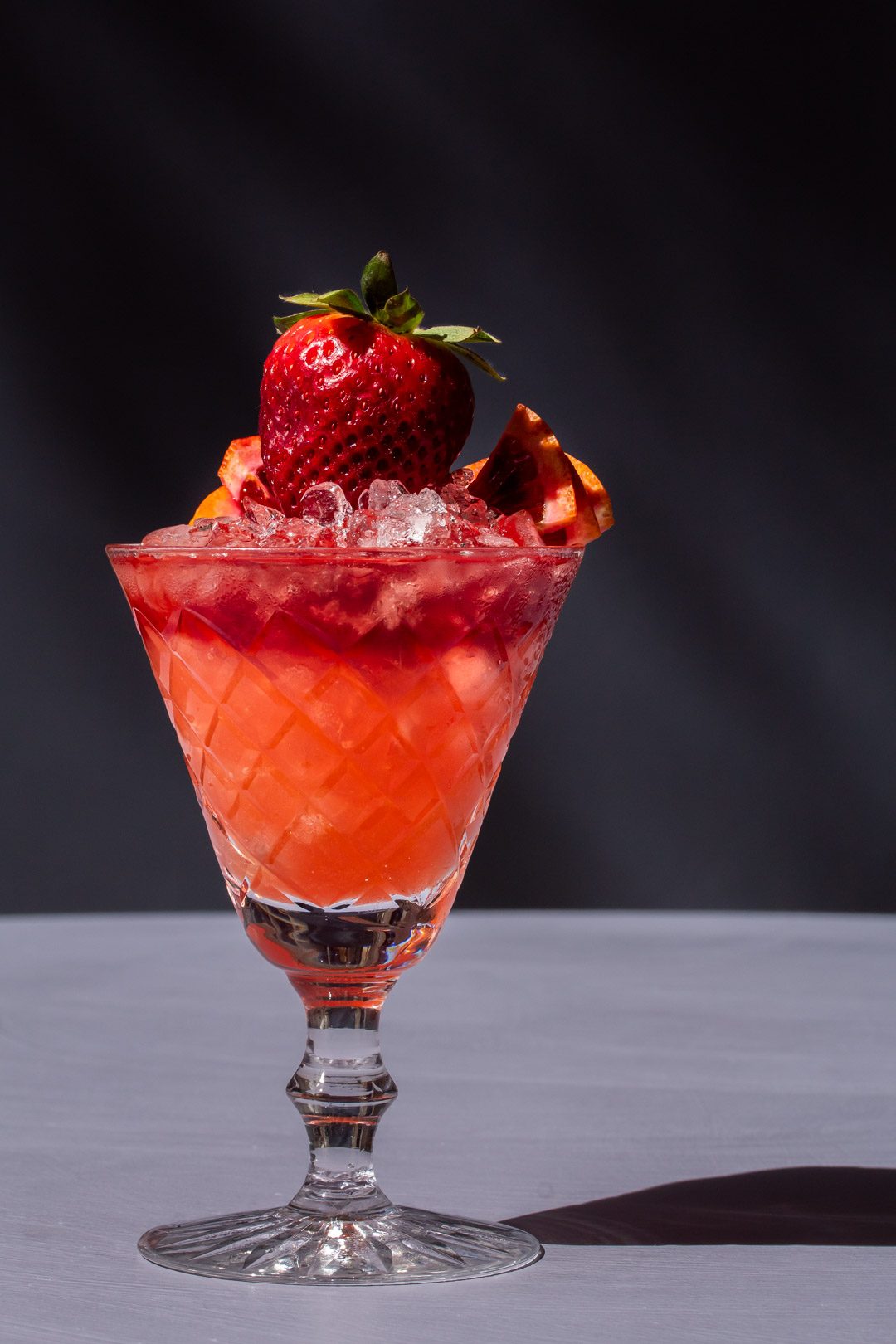
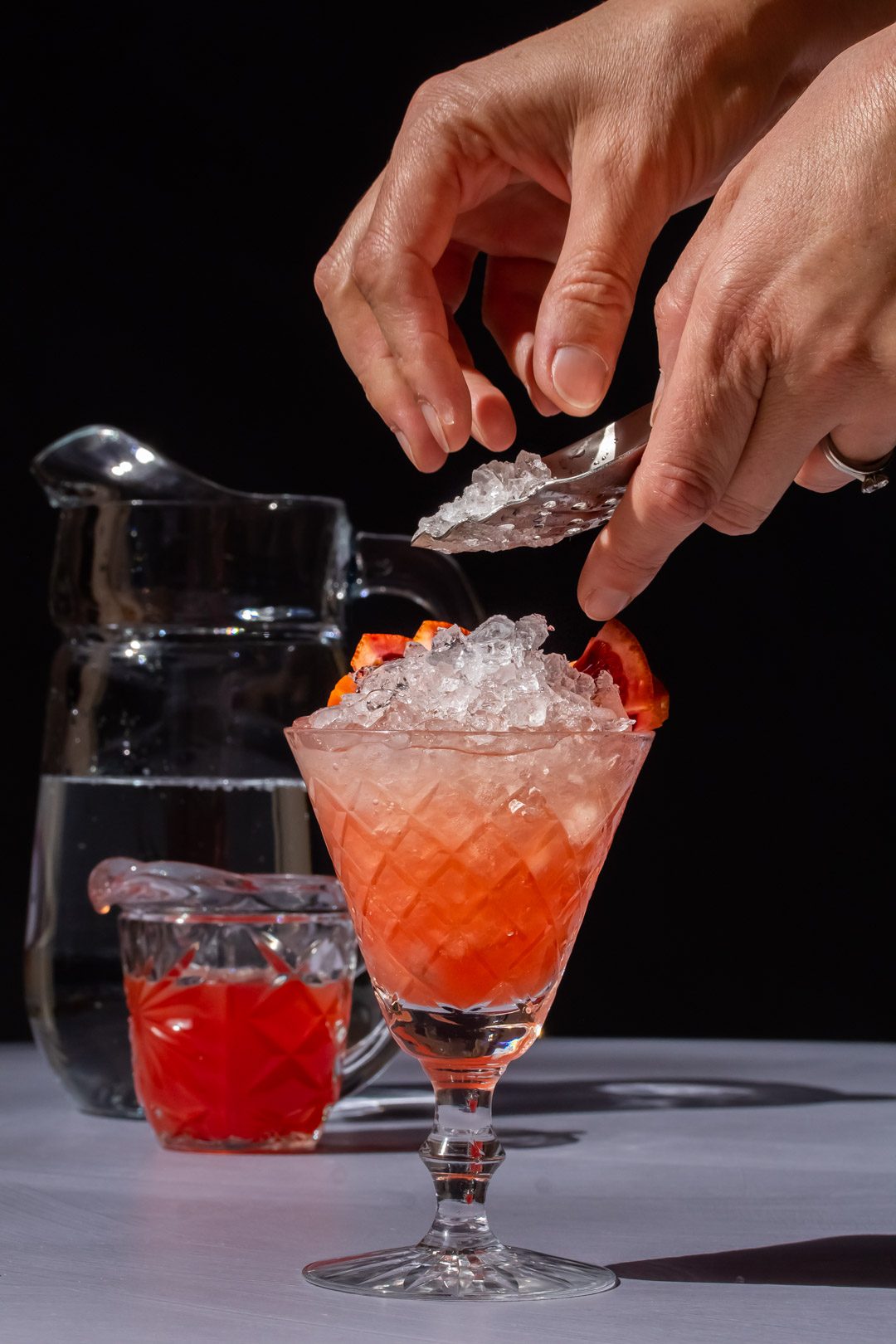
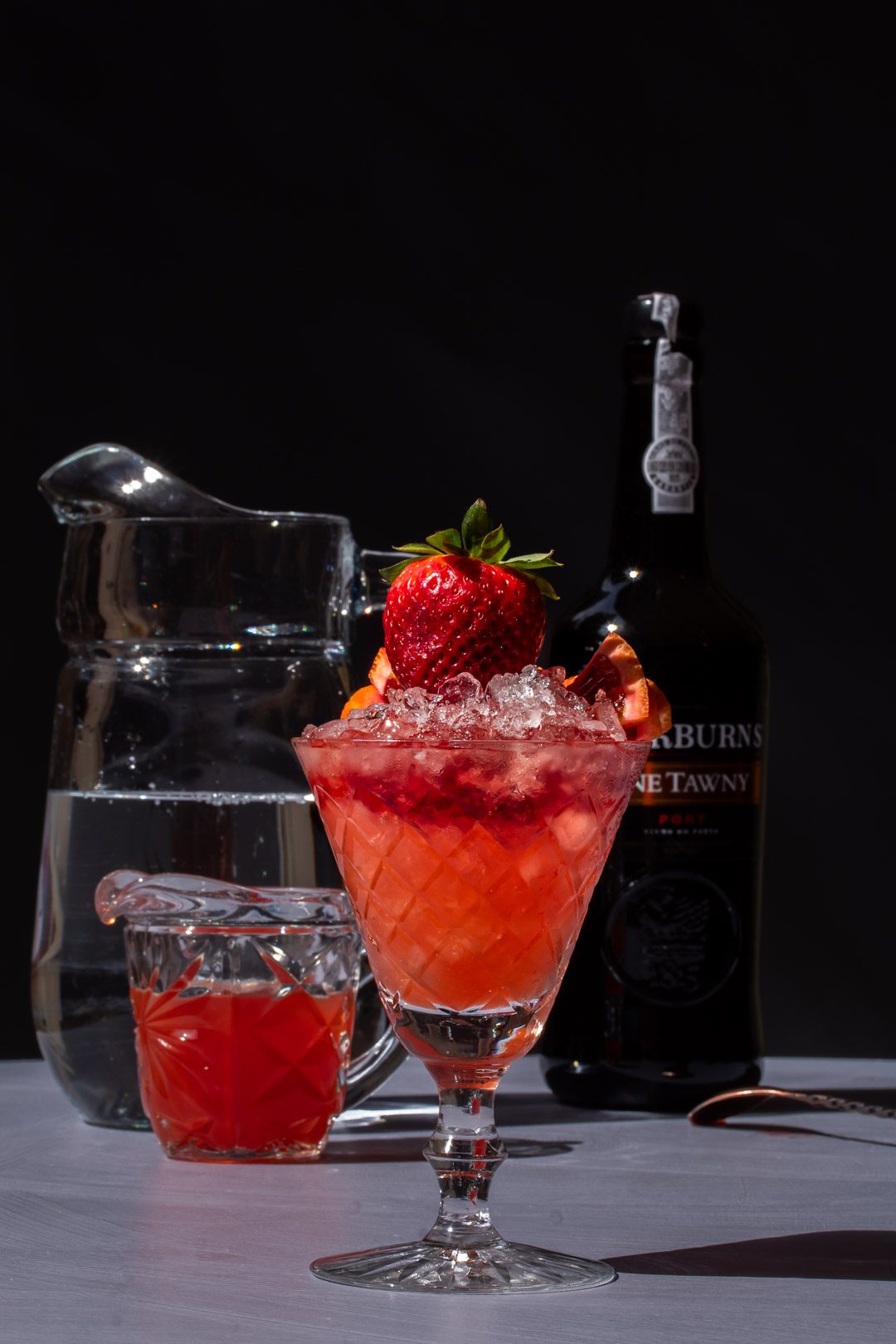
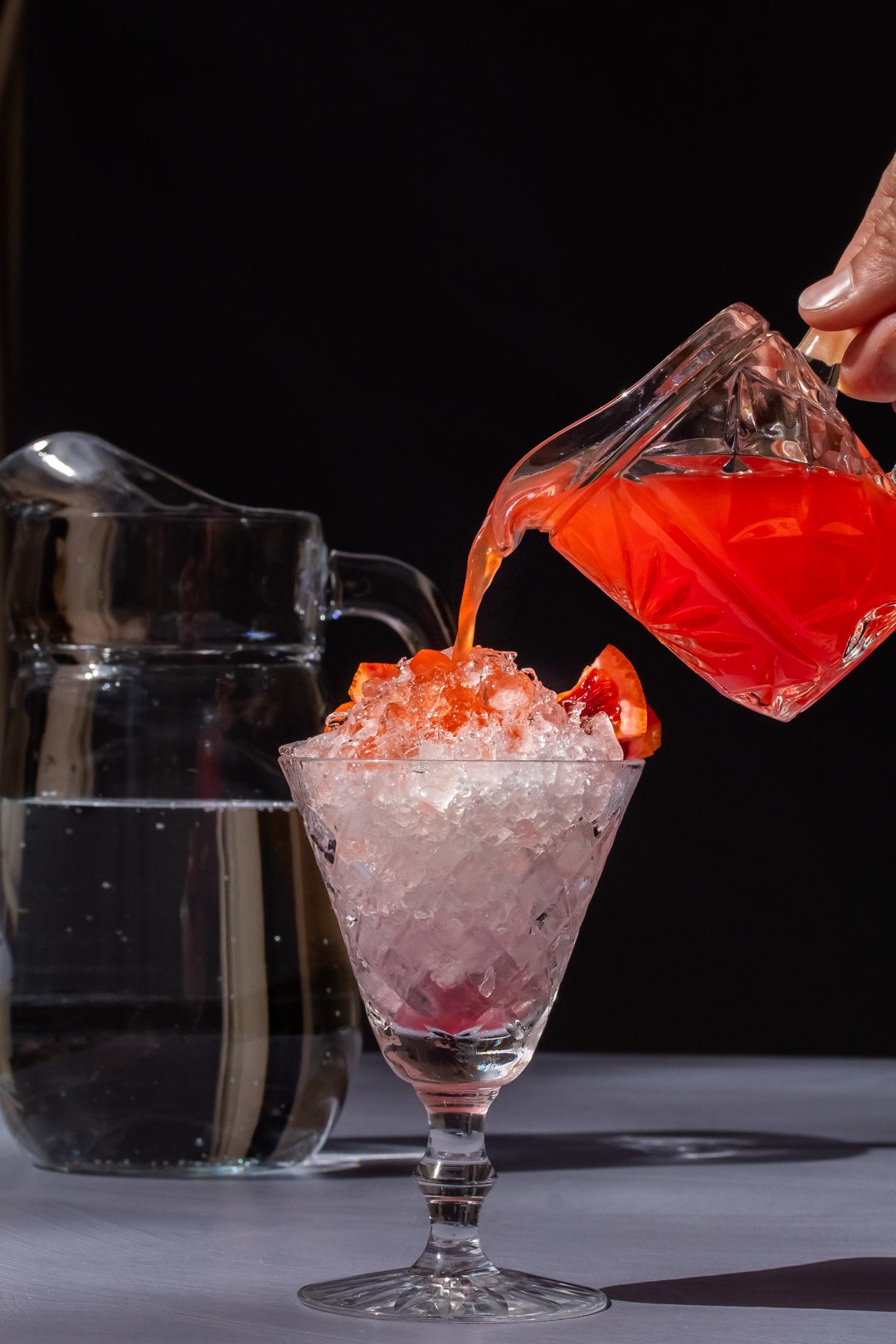
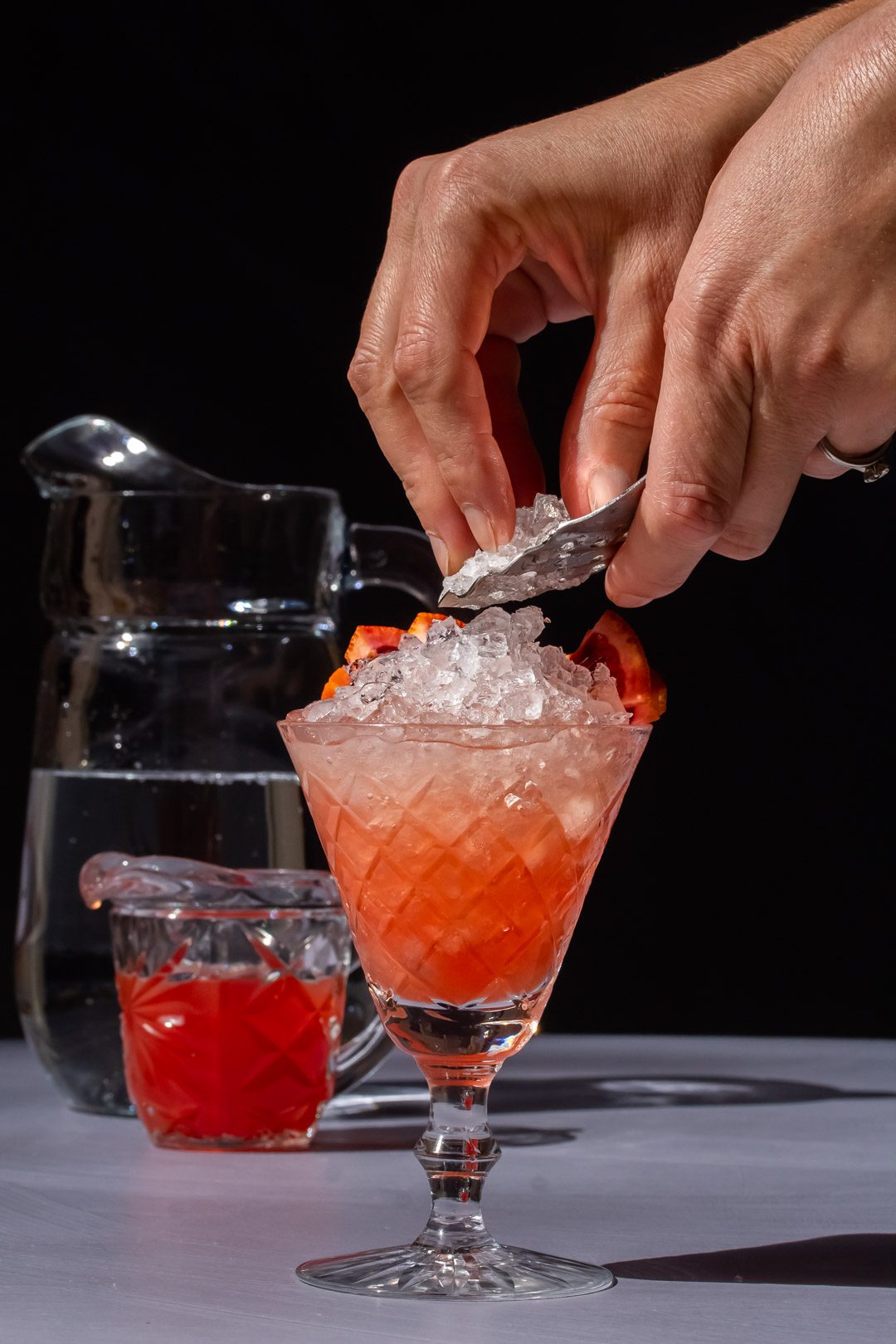
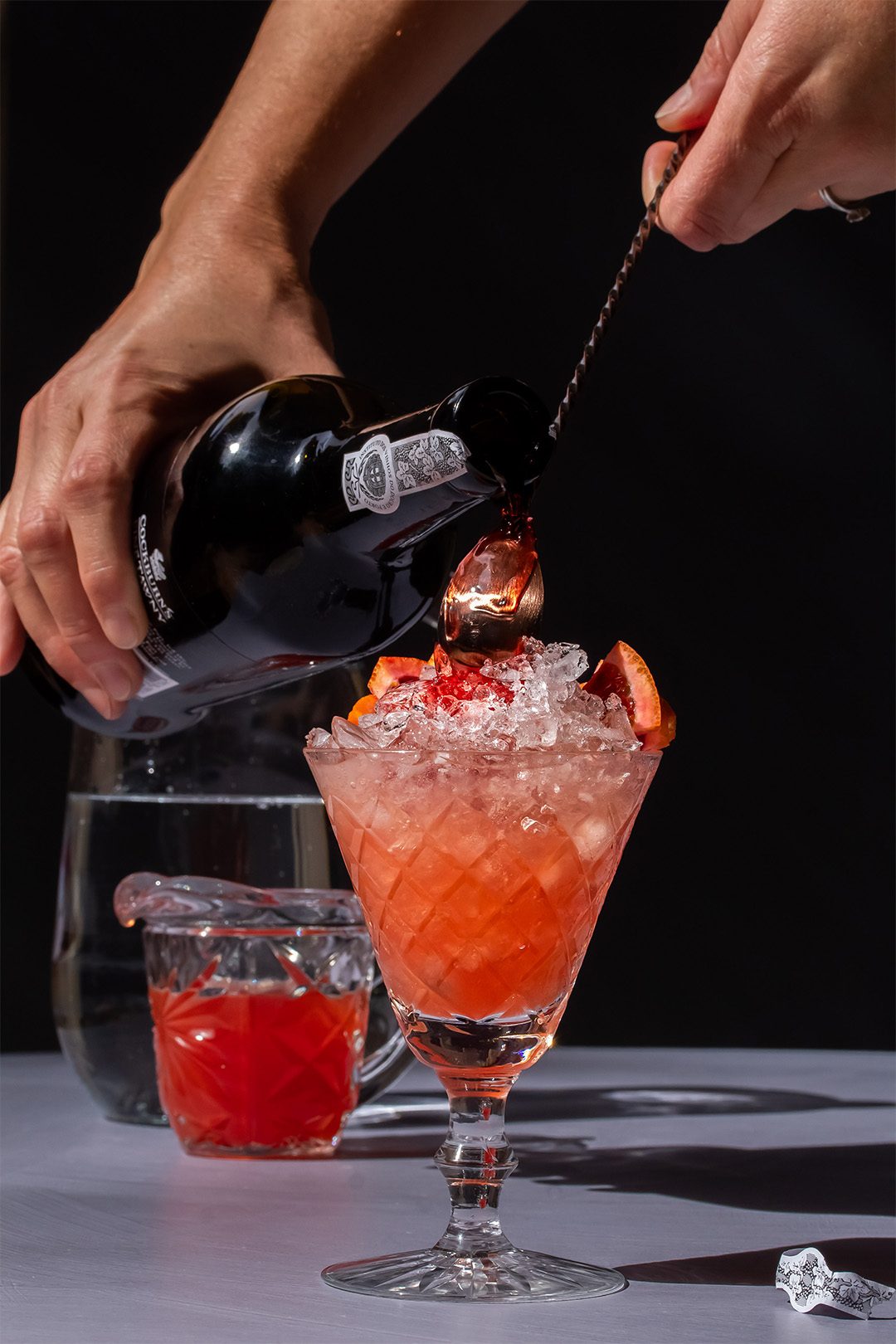
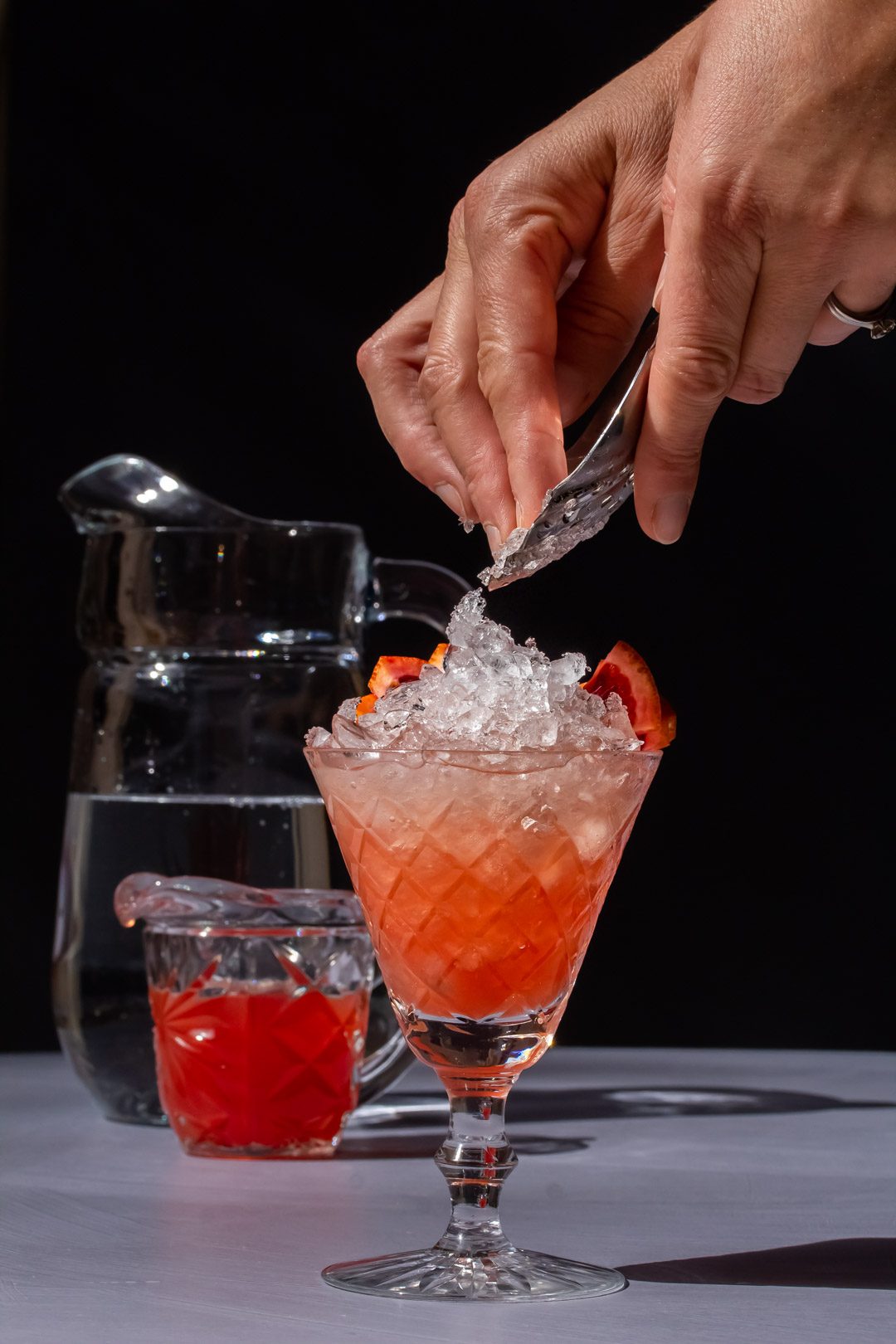
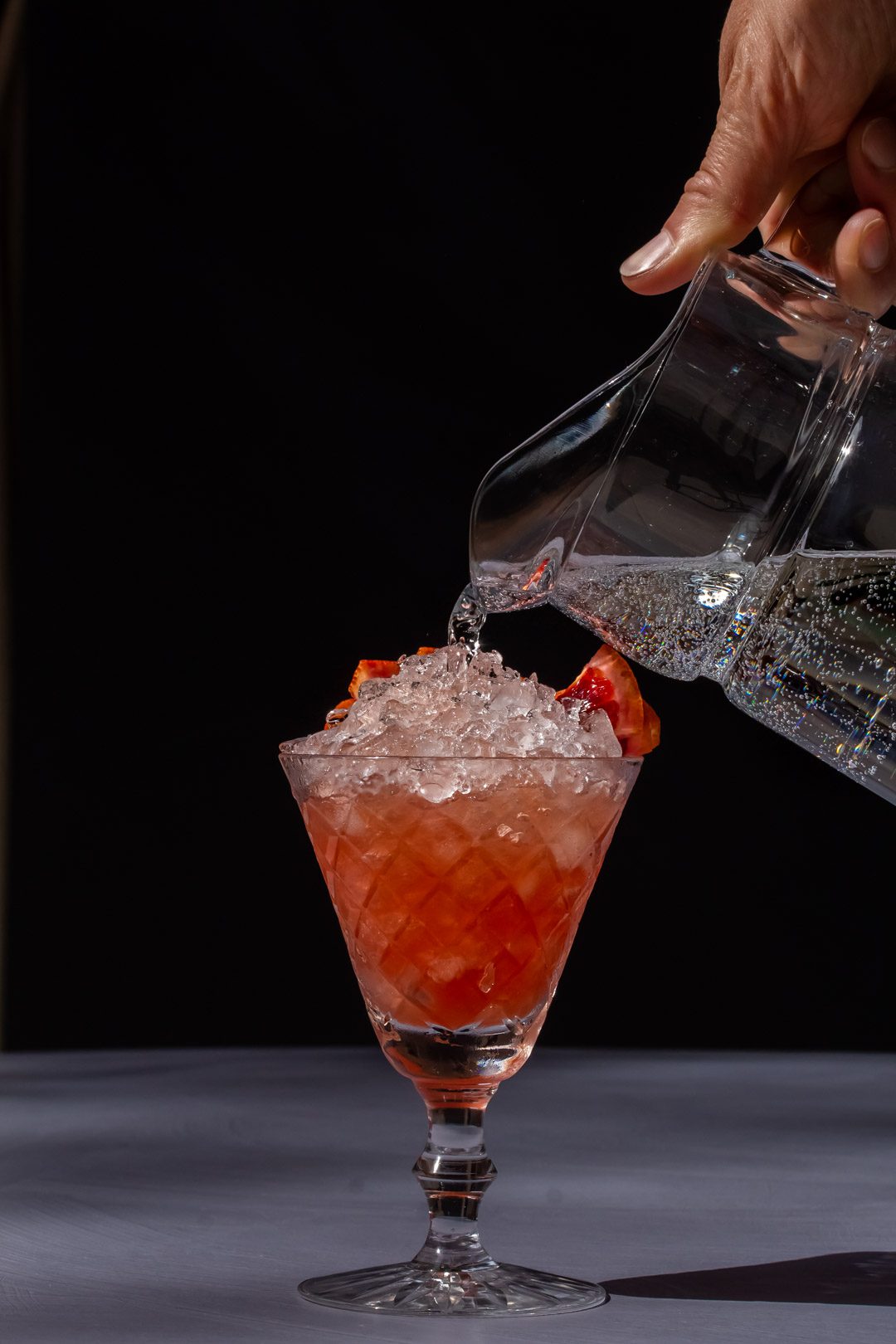
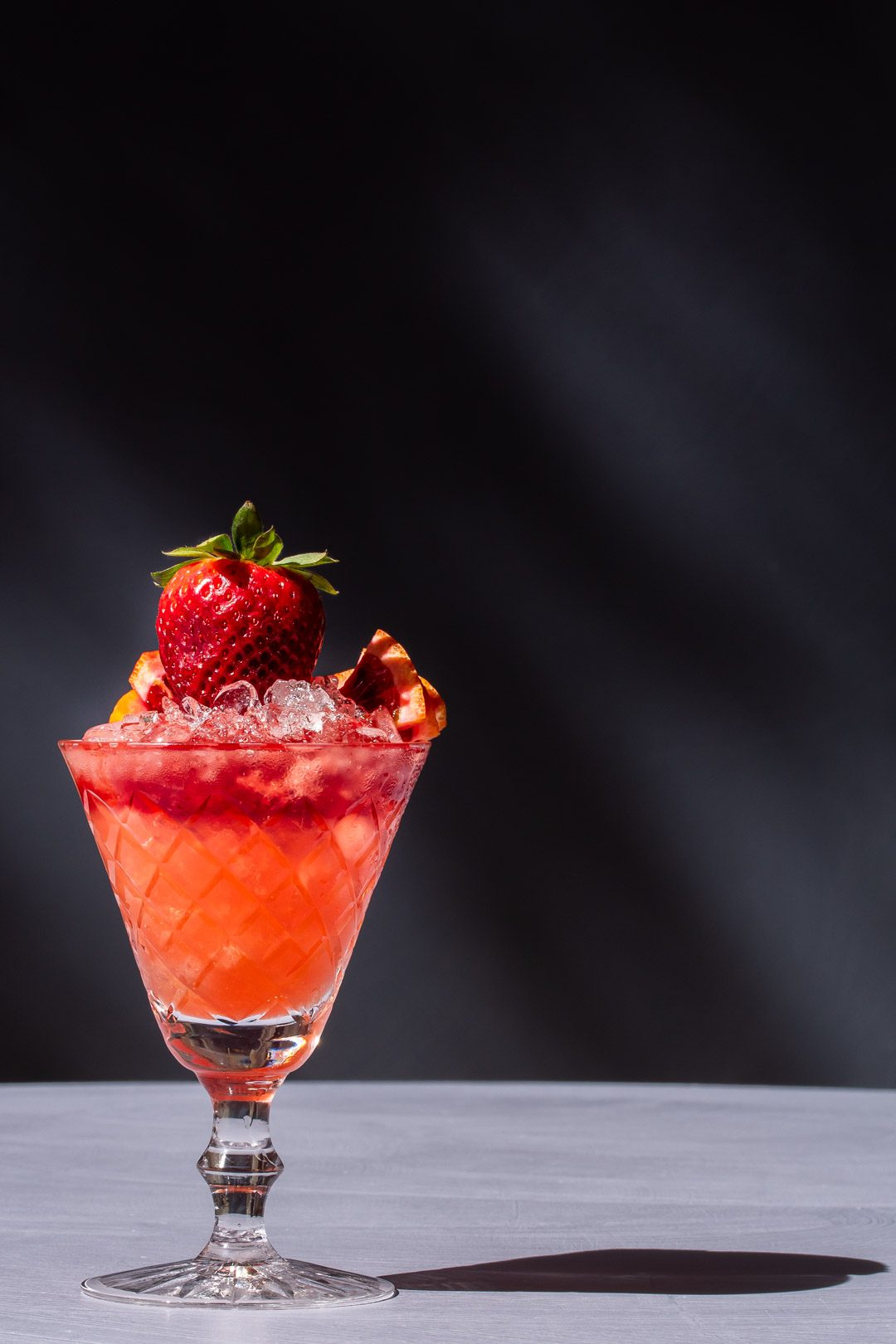
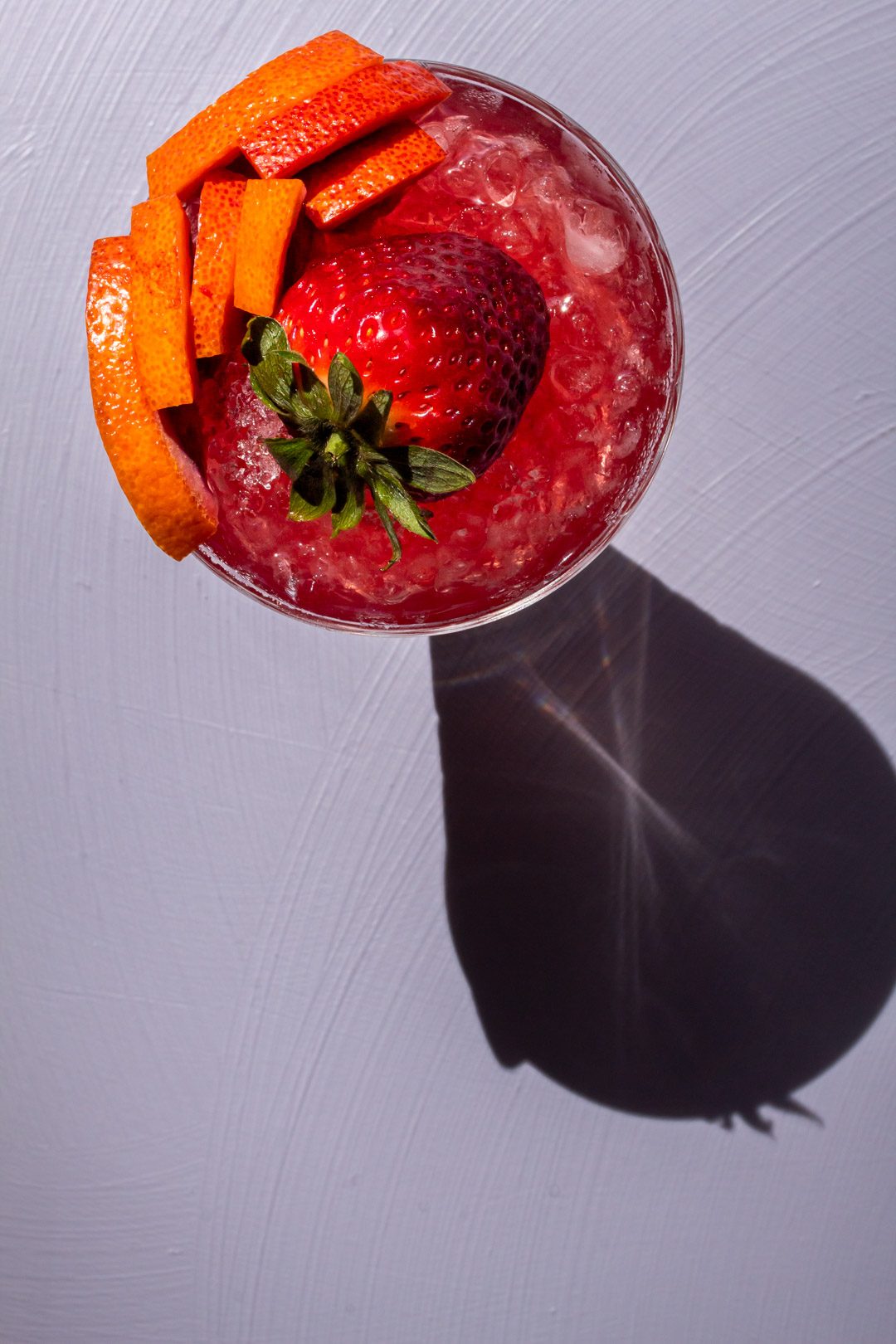
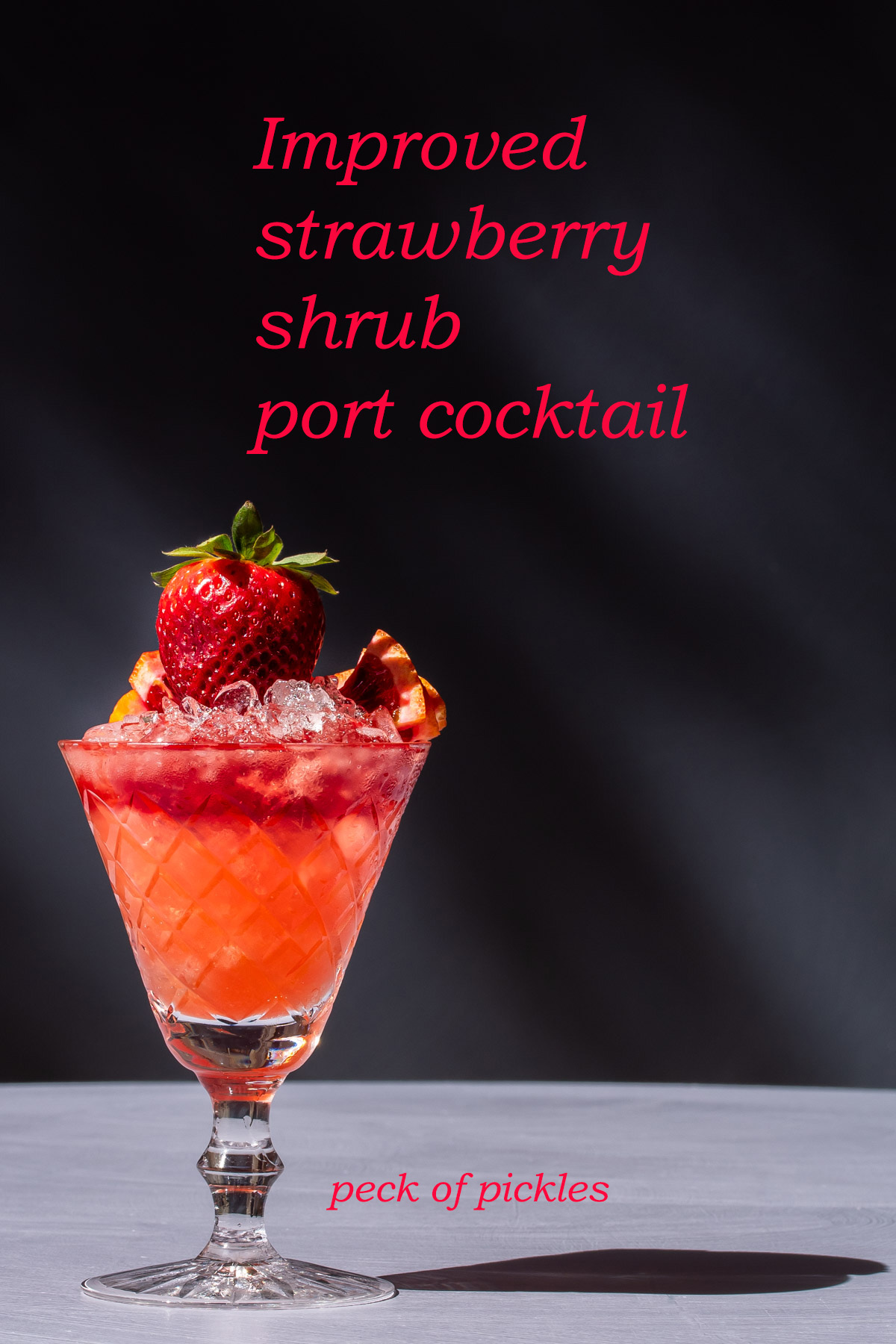
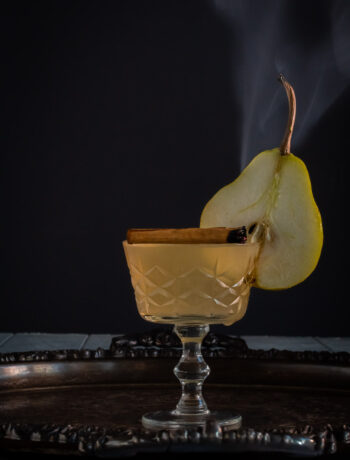
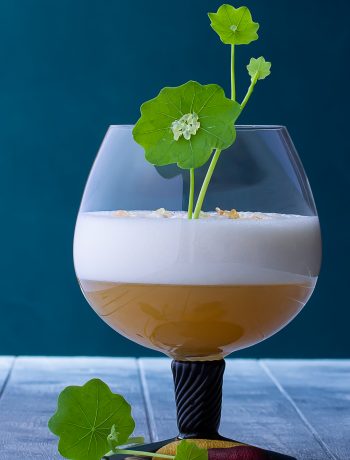
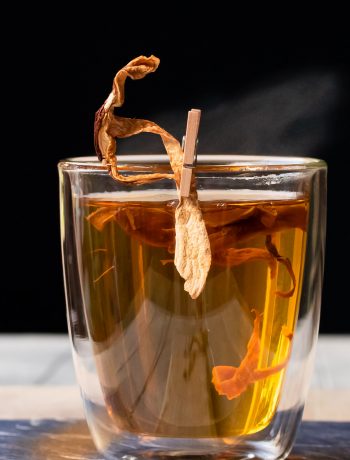
No Comments